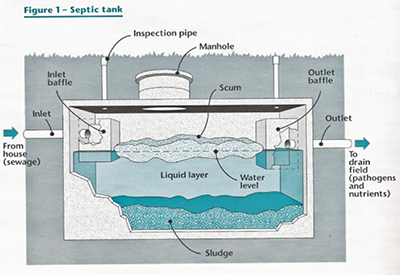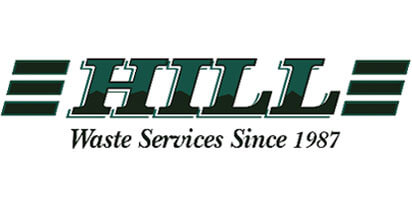Septic
Maintain Your Septic System
Maintenance is important to maintain your septic systems to prolong the life of your investment. Proper maintenance is essential and relatively inexpensive over the lifetime of your system.
If you do not properly maintain your components, you may be in the unfortunate situation of replacing the entire system. This could cost you $10,000 to $45,000!
It is crucial to have your system maintained regularly Your PSMA Service Provider can recommend the appropriate intervals for your type of system. More advanced systems will require more frequent service. In addition, the Service Provider will make proper recommendations on how often to pump the tank and maintain your system. Your municipality may have specific requirements Locate a PSMA Professional Service Provider at www.psma.net to ensure your system is properly maintained!
Be a conscientious neighbor and environmental steward! By not properly maintaining your system, you could pollute the groundwater which is harmful to the environment, not to mention harmful to your family and community! Properly operating systems will remove most harmful pollutants that could seep into the groundwater from the septic system. Because this could be the water you drink, you want to make sure it is clean!
Signs of Trouble
You may need to have your system checked if any of the following occur:
- Toilet runs sluggish.
- Sewer odors in the house and/or drinking water.
- Sponginess around the septic tank, distribution box or dosing tank and absorption field.
- Surfacing raw sewage.
- Dosing pump runs constantly or not at all.
- Dosing tank alarm light is on.
- Backup of sewage into laundry tubs or other fixtures.
What is a Septic System?
An onlot wastewater treatment system (commonly known as a septic system):
- Receives all the sewage from a structure;
- Separates the solids from the liquids in a treatment tank; and
- Distributes relative clarified effluent to the soil through an absorption area.
The first component of your septic system is the septic tank – an underground watertight receptacle that is designed and constructed to receive wastewater from your home. This tank:
- Separates the solids and liquids;
- Provides basic biologic treatment;
- Partially digests organic matter;
- Stores sludge and scum;
- Delivers relatively clear effluent to the absorption area; and
- Needs to be cleaned and inspected at regular intervals.
In a properly functioning treatment tank, solids and liquids are effectively separated. The heaviest matter, such as solids, settle to the bottom of the tank forming sludge. Lighter material, including fats and greases, rises to the top and is called scum. The partially clarified liquid that lies between the scum and the sludge layers, called effluent, flows out to the absorption area.

The most sensitive component of the system is the absorption area. This part of the system uses a series of pipes and sometimes other devices to evenly distribute partially treated wastewater throughout the absorption area. There, the soil will complete the treatment process as it allows the treated water to return to the groundwater. It’s the ultimate green machine!
An absorption system can refer to cesspools, seepage pits, standard beds, trench systems, subsurface sand filters, elevated sand mounds and at-grade beds. There are also some advanced technologies, such as stream discharge, spray irrigation drip systems and A/B soil systems that may require more frequent inspection and/or maintenance. These advanced technology systems may have reporting requirements to the township and/or the Pennsylvania Department of Environmental Protection.
Be sure to hire a PSMA certified professional to ensure that proper pump-out standards are followed. You can find these standards on the PSMA website at www.psma.net
What is Maintenance?
Regular and proper septic tank cleaning is one way to help prolong your onlot sewage system.
- Make sure that the vacuum truck technician opens the main access of the septic tank when cleaning it. This allows for it to be completely cleans and inspected.
- The tank should never be pumped through the 4” or 6” inspection port that is situated over the baffles. Only a small portion of the tank will be cleaned and risk of damaging the baffles inside the tank is high.
- The condition of the baffles should be inspected. If missing, broken, damaged or deteriorated, they should be replaced immediately. They serve an important purpose in helping to prolong the life of your system and protect the environment. If an effluent filter is present, it should be cleaned during the maintenance. Please note, effluent filters may require more frequent maintenance.
When the sludge and scum layers are not routinely pumped out, the area in the tank available for clarification and biologic treatment decreases.
- Solids will enter the absorption area at an accelerated rate and the absorption area clogs prematurely.
- Effluent rises over the absorption area onto the surface of the ground. Sewage finds its way to a stream or road ditch, or bacs up into your home.
Proper maintenance and management require development of an effective program to monitor, inspect and maintain all components of the septic system on a regular basis. Please note, more advanced technologies (such as aerobic tanks, peat moss filters, sand filters, disinfection units or absorption areas mentioned on the previous page) need to be maintained more frequently. You may want to check your township’s requirements for these types of systems.
You Can Trust Our Service
You can feel confident knowing we are fully licensed to handle the necessary septic tank, grease trap, and other cleanings throughout the area. Call us to put over 50 years of experience behind your cleaning needs.
Helpful Hints About Our Septic Services
- Septic tanks are cleaned through large openings – most Township’s ordinances state septic’s must be cleaned through a manhole sized opening.
- How many lids are ground level – Most Township’s ordinances state that the septic has to be dug open.
- Most Townships want them cleaned in the regular cycle. (We file paperwork with the Township after pumping if it is required.)
- Pump Tank – alarm would be either in garage or basement. If the alarm is sounding – there is an issue with the pump.
- Length of hose – measure from where the truck parks to the center of the lid.
- All septic’s have a level of fullness for them to operate.



